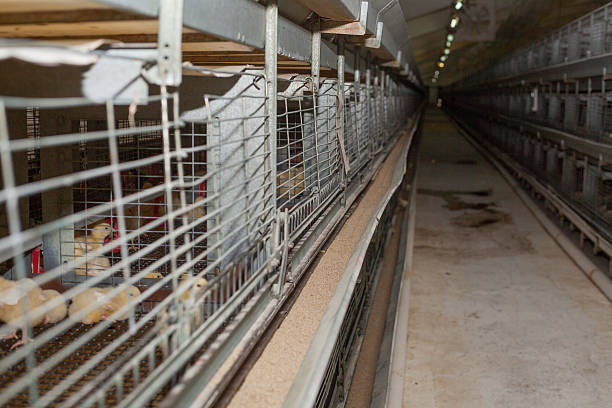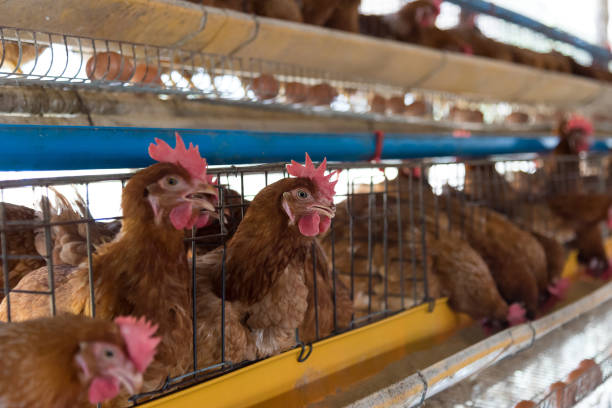H-Type Layer Cages Cost: Understanding Pricing for African Poultry Farms
H-Type Layer Cages Cost: Understanding Pricing for African Poultry Farms
For African poultry farmers eyeing increased efficiency and higher egg yields, H-type layer cages are becoming an increasingly attractive option. These systems, known for their multi-tiered design and automated features, can significantly boost productivity. However, a crucial element in deciding whether to invest is understanding the cost. This article delves into the various factors influencing H-type layer cage pricing for African poultry farms, providing a comprehensive overview to help you make an informed decision.
What are H-Type Layer Cages?
Before diving into the costs, it’s essential to understand what H-type layer cages are and how they differ from traditional A-type cages. H-type cages are multi-tiered systems that stack cages vertically, maximizing space utilization within the poultry house. This design allows for a higher density of chickens per square meter compared to A-type cages, which typically have a sloped, single-tier arrangement.
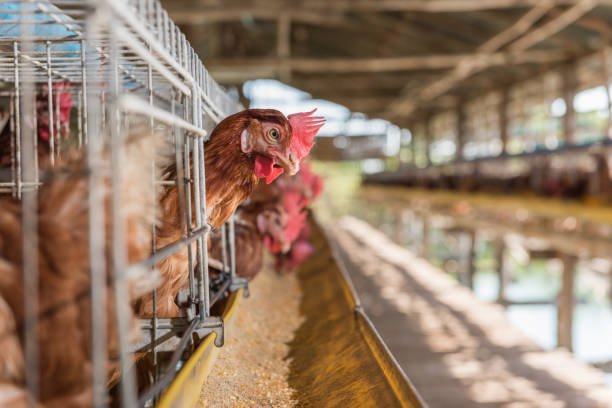
Key features of H-type layer cage systems often include:
Automated Feeding Systems: These systems deliver feed to each tier of cages automatically, ensuring consistent feed distribution and reducing labor costs.
Automated Manure Removal Systems: Efficiently remove manure from the cages, improving hygiene and reducing the risk of disease outbreaks.
Automated Egg Collection Systems: Gently collect eggs from each tier, minimizing egg breakage and saving labor.
Environmental Control Systems: Ventilation, temperature, and lighting systems can be integrated to maintain optimal conditions for the chickens, promoting health and productivity.
Factors Influencing H-Type Layer Cage Costs
The cost of H-type layer cages can vary considerably depending on several factors. Here’s a breakdown of the primary elements that affect pricing:
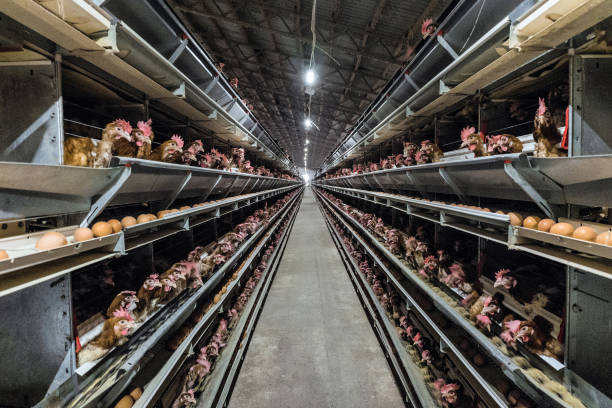
Cage Capacity and Size: The number of birds the cage system is designed to house is a major cost driver. Larger systems with greater capacity will naturally be more expensive. The physical dimensions of the cages also play a role, as they influence the amount of material required.
Level of Automation: The degree of automation significantly impacts the price. Systems with fully automated feeding, manure removal, and egg collection will be more expensive upfront but can yield significant long-term cost savings in terms of labor and efficiency. Simpler, semi-automated systems offer a more affordable option for farms with smaller budgets.
Materials Used: The quality of materials used in the construction of the cages is a critical factor. High-quality galvanized steel or other corrosion-resistant materials will ensure the longevity of the cages, but will likely come at a higher price. Opting for cheaper materials might save money initially, but could lead to increased maintenance costs and a shorter lifespan.
Manufacturer and Brand: Different manufacturers and brands have varying pricing strategies. Well-established brands with a reputation for quality and reliability may charge a premium. It’s important to research different suppliers and compare their offerings, considering both price and quality.
Transportation Costs: Shipping costs to African countries can be a substantial expense, particularly for large cage systems. The distance from the manufacturing location to the farm, as well as import duties and taxes, will all contribute to the overall cost.
Installation Costs: Installation of H-type layer cages requires specialized expertise. Some suppliers include installation as part of the package, while others charge separately. Be sure to clarify the installation costs upfront to avoid any surprises.
Environmental Control System: Integrating environmental control systems (ventilation, cooling, etc.) adds to the overall costs. The complexity and sophistication of these systems will greatly affect the final price.
Country of Origin: The country where the cages are manufactured can influence the price due to differences in labor costs, material costs, and manufacturing standards. Cages manufactured in China, for example, may be more affordable than those made in Europe or North America.
After-Sales Service and Support: The availability of after-sales service, spare parts, and technical support is an important consideration. Choosing a supplier that offers comprehensive support can help minimize downtime and ensure the smooth operation of the cage system.
Cost Breakdown: A Closer Look
To provide a clearer picture of the cost, let’s break down the approximate expenses associated with an H-type layer cage system for a typical African poultry farm:
Cage Structure: This includes the cages themselves, the frames, and any structural supports. The cost will vary based on the number of tiers, the size of the cages, and the materials used. Expected to take 40-60% of the total cost.
Automated Feeding System: This includes the feed hoppers, conveyors, and distribution mechanisms. The cost will depend on the complexity of the system and the number of feeding lines. Expected to take 10-20% of the total cost.
Automated Manure Removal System: This includes the manure scrapers, conveyors, and disposal mechanisms. The cost will depend on the type of manure removal system (e.g., belt system, scraper system) and the length of the manure removal lines. Expected to take 10-15% of the total cost.
Automated Egg Collection System: This includes the egg collectors, conveyors, and packing equipment. The cost will depend on the level of automation and the sophistication of the egg handling equipment. Expected to take 5-10% of the total cost.
Environmental Control System: Ventilation fans, cooling pads, heating systems, and control panels. The cost will depend on the size of the poultry house and the desired level of environmental control. Expected to take 10-15% of the total cost.
Installation and Training: Labor costs for installing the cage system and training farm staff on its operation and maintenance. Expected to take 5-10% of the total cost.
Shipping and Import Duties: Transportation costs from the manufacturer to the farm, as well as any applicable import duties and taxes. This can vary significantly depending on the location of the farm and the origin of the cages. This number is variable depending on the specific location of the farm.
Estimating the precise cost requires obtaining a detailed quote from a reputable supplier. Be sure to provide them with accurate information about the size of your poultry house, the number of birds you intend to house, and your specific requirements.
Tips for Reducing H-Type Layer Cage Costs
While H-type layer cages represent a significant investment, there are several strategies you can employ to reduce the overall cost:
Compare Quotes from Multiple Suppliers: Obtain quotes from several different suppliers and compare their prices and offerings carefully. Don’t just focus on the initial price; consider the long-term costs of maintenance, spare parts, and technical support.
Consider Semi-Automated Systems: If your budget is limited, consider a semi-automated system that offers a balance between cost savings and efficiency. You can always upgrade to a fully automated system later as your farm grows.
Choose a Reputable Supplier with Local Presence: Opting for a supplier with a local presence in Africa can help reduce transportation costs and ensure access to timely after-sales service and support.
Negotiate with Suppliers: Don’t be afraid to negotiate with suppliers to see if they can offer discounts or special deals. They may be willing to lower the price if you are purchasing a large quantity of cages or if you are a new customer.
Plan Ahead: Planning ahead can help you avoid costly delays and unexpected expenses. Ensure you have a clear understanding of your requirements and budget before contacting suppliers.
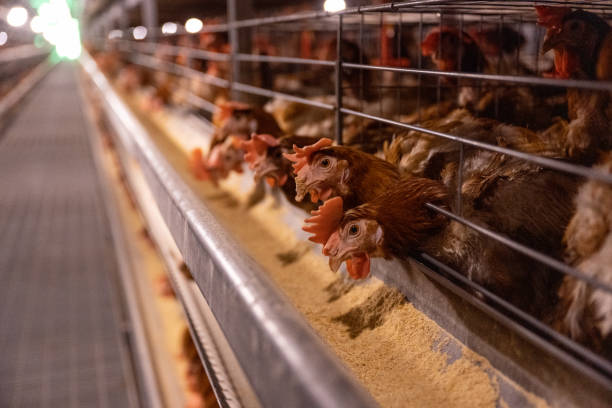
Explore Financing Options: If you are unable to afford the full cost of the cages upfront, explore financing options such as loans or leasing agreements.
Consider Second-Hand Equipment: In some cases, purchasing second-hand H-type layer cages can be a cost-effective option. However, be sure to thoroughly inspect the equipment before purchasing it to ensure that it is in good working condition.
Optimize Poultry House Design: Optimizing the design of your poultry house can help reduce the cost of the cage system. For example, ensuring that the house is well-ventilated and insulated can reduce the need for expensive environmental control systems.
Making the Right Choice for Your Farm
Investing in H-type layer cages can be a game-changer for African poultry farms, leading to increased efficiency, higher egg yields, and reduced labor costs. However, it is crucial to carefully consider the costs involved and to make an informed decision based on your specific needs and budget.
By understanding the various factors that influence H-type layer cage pricing, comparing quotes from multiple suppliers, and exploring cost-saving strategies, you can maximize your return on investment and ensure the long-term success of your poultry farming operation. Ultimately, the best H-type layer cage system is the one that meets your specific needs, provides good value for money, and helps you achieve your poultry farming goals. Prioritize quality, consider long-term savings from automation, and choose a reliable supplier to ensure a worthwhile investment. Remember to factor in all costs, from the initial purchase to operational expenses like electricity and maintenance. A well-planned investment in H-type layer cages can set your African poultry farm up for sustainable growth and profitability.




